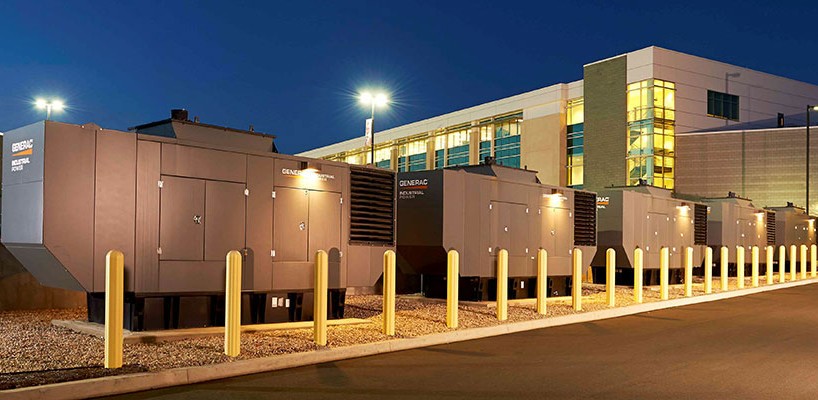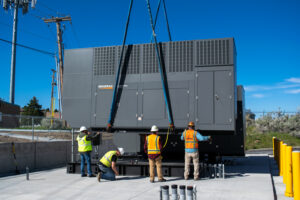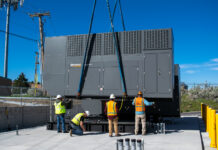Benefits of generator paralleling
Generator paralleling has recently become a more popular solution because of the overall decrease in complexity of paralleling solutions. Paralleled generators allow for more flexibility, reliability, scalability, and serviceability. This article will go over what a paralleling system is, why you should use a paralleled system, and the possible downsides of a paralleled system.
What is a Paralleling System?
A paralleling system is simply defined as two or more generators that are electrically coupled together, using special equipment, and then connected to a common BUS. This is usually done to form a larger capacity power source, create extra reliability for emergency applications, or where unscheduled downtime can cost companies big chunks of money. While paralleling systems are more costly to install and maintain, they allow much more flexibility for companies to grow and expand, compared to a single generator application.
For generators to be able to be installed in a parallel system, they must have the same waveform, phase sequence, frequency, phase angle difference, and voltage amplitude difference.
Why Use a Paralleling System?
A paralleled generator system is superior to a single generator in three different realms. Reliability, scalability, and serviceability.
Reliability for a single generator is widely accepted, around 95-99% depending on your specific application and load. Redundant systems can offer multiple nines reliability for your critical loads:
N+1 = 99.96-99.99% Reliability
N+2 =99.9992-99.9999% Reliability
(Where N = your facilities power needs.)
Scalability is greatly increased as the ability to expand is available as your client’s needs grow. This allows you to not ‘overbuild’ at the beginning of your operation’s lifespan, and preserve capital for other areas of your business. If you know that later on, your operation may expand and have a larger need for backup power, you can prepare an area for those future generators, but not have to take on the financial responsibility of installing and maintaining them just yet.
The serviceability of your application can be increased by paralleling. This will allow you to take one generator offline for servicing and transfer your loads to the other generator for easy and uninterrupted backup power.
Paralleling systems also give you greater flexibility in the installation location. One single large kW generator has too much weight in a small area to be installed on a roof. But a few smaller kW gens are easily spread out for better weight distribution or are usually small enough to fit in parking garages where larger kW generators cannot fit.
Why Not Use a Paralleling System?
Traditional paralleling implementations have limitations, such as cost. If one generator is expensive, multiple generators are even more so. Then you have to think about the cost of the controllers that are needed for the generators to “talk”, the cost of maintaining multiple gensets, and the cost of installation and design of two or more generators and their associated pads/housing/etc.
New generators are manufactured with the hardware and software needed for paralleling capabilities. If you have an older generator, it will need to be retrofitted with the applicable parts to be able to fit in to your paralleled system. This is another area to keep in mind when you are thinking about installing a parallel system in your facility. Overall, paralleled systems give you better flexibility, reliability, and the ability to grow and scale up as your business needs more capacity. However, as with any product, having to purchase more than one generator and the associated equipment can drive up the price significantly. In order to decide if a paralleled solution is right for you, get in touch with a reputable generator company (like us!) and speak with a knowledgeable representative.
This article is based on our Generator Paralleling Webinar
Got More Generator Questions? We Can Help!
Call 800-595-5315 Or Connect With Our Expert Technicians Here:
Other Articles
- Critical Spare Planning
- Where Do I Start On My Generator Installation?
- How can Las Vegas heat lead to generator failures?



Lead Generator Technician
Graduated from Idaho State University with a degree in Heavy Duty Diesel and Onsite Power Generation. Damien is a master tinkerer and has been working on anything with a motor since he was about six years old. Besides being a generator fanatic, Damien is also an avid snowmobiler and aspiring world traveler.







